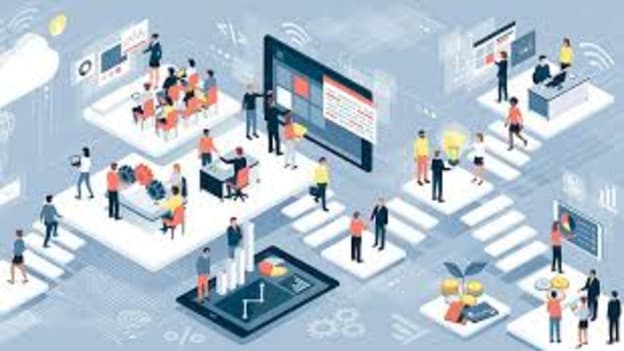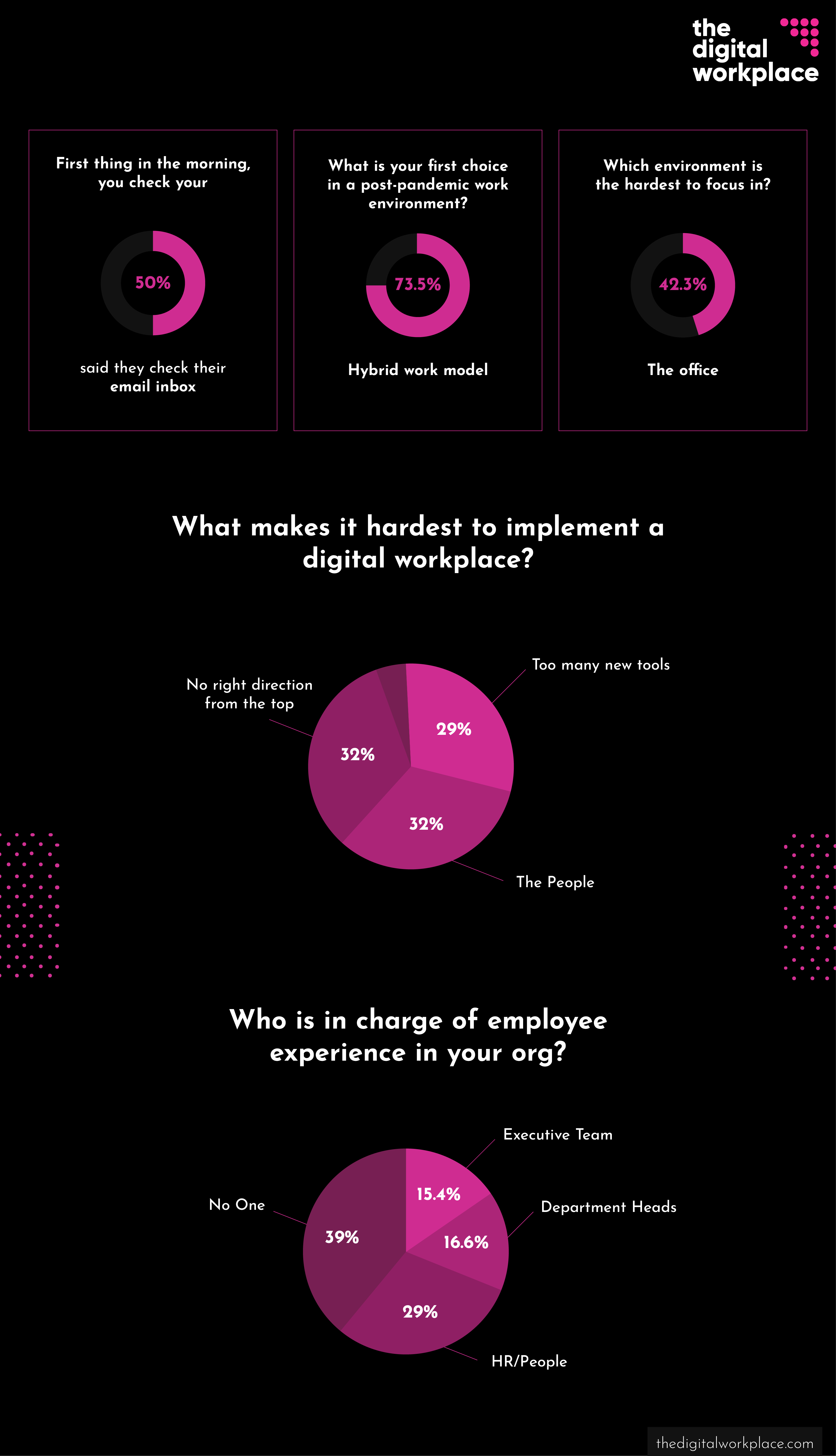Celebrating 'Digital Workplace Day' and a new future of work

For more than six months, we’ve been trying to figure out how to make work work. We’ve shared tips on working from home, and chosen the perfect virtual backgrounds. We've scheduled endless numbers of standup meetings, and gotten really good at using emoji.
The narrative has been, “Get used to the new normal. If we are going to be in this for a while, let’s make the best of it."
But that’s exactly the wrong approach. This is not the new normal; this is a holding pattern. Organizations are circling above what used to be their work, waiting for the all clear sign. When it comes, most organizations will return to business as usual with a few perks along the way, such as more working from home.
But that’s not the only option. Instead of waiting to land, you could decide to fly upward.
The digital workplace journey
The digital workplace happens when organizations shift the nucleus of work away from the office. It’s not an instant event, but a journey. Just as an aircraft doesn’t suddenly leave the earth’s atmosphere, the journey to a digital workplace happens over time. You may not realize how far you’ve come until you look down from 50,000 feet.
But the journey upward is not easy.
It’s hard because it requires you to rethink everything you knew about work. A digital workplace redefines collaboration, productivity, leadership, culture, and technology. Old habits that worked fine when you were on the ground no longer make sense when you are flying through the air.
The journey is hard because there’s no clear roadmap. There aren’t signposts along the way that make sure you are on the right path and tell you how far you have to go. You’ll feel like you are guessing and building the plane’s capabilities as you go.
The journey is hard because it requires a higher level of training. Pilots need more training than bus drivers, and use strange terms like roll, pitch, and yaw. On the digital workplace journey, you need to learn new terminology like asynchronous communication and distributed decision making.
Organizations who chose to fly up need help. If they try to do it on their own, they may crash unexpectedly. Digital companies need to know the core issues. They have to help teams who are drowning in digital messages. They must retrain their leaders on how to take care of people they only see ten minutes a day. They need new ways to track productivity when they can’t see people working at their desks.
Digital companies also need to connect and share with each other. We are all learning and experimenting and now is the time to share as much as possible.
Thankfully, there are pioneers who have been flying for a while and are a few thousand feet above us. We can learn a lot from how they got there.
Digital Workplace Day
To help those who don’t want to go back to the ground, we hosted a large virtual conversation on Twitter to mark Digital Workplace Day on October 6th. It revolved around the core issues that digital leaders need to know about how to get to the next level.
We had nearly 100 industry experts as panelists. There were 24 consecutive sessions over 24 hrs, that covered topics ranging from new leadership models, the end of email, improving digital meetings, and the new role of the physical office. Each session featured panelists who had something to share from their own journey. More than 4,000 people participated in the event, with a reach to 12 million Twitter users.
Panelists came from around the world and included CEOs of digital companies, authors, and digital leaders in large enterprises. Among the 100 panelists were Tim Hughes, CEO of DLA Insight, author Nir Eyal, speaker Jennifer Brown, author Abhijit Bhaduri, digital ethicist Gerd Leonhard, Ester Martinez, Editor-in-Chief of People Matters and Kissflow CEO Suresh Sambandam.
Much of the discussion centered around the deliberate nature of a digital workplace compared to the serendipitous nature of the physical office. Digital teams have to work harder to be more intentional about collaboration, defining productivity, inclusive leadership, and building culture.

Rounding up the general pulse of the internet on remote work, work culture, and collaboration tools, here are the results from a few quick polls we did during the 24-hr tweetathon:
Looking at the trends and the opinions, it can be concluded that the office culture is at the brink of a revolution. The way we work will soon be altered for the better. Sure, remote work can cause burnouts. But burnouts are pretty common in all scenarios. A two-hour daily commute to the office can cause a burnout as well. With a proper culture, the right tools, and a well-planned implementation strategy, the digital way of working can prove to be one of the greatest revolutions in the history of work management and collaboration.
















